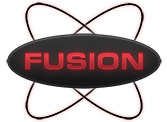Cleanliness of a brazed or soldered joint—both before and after assembly—is most important. Fusion offers Fuze-Clean metal preparation chemicals for pre-cleaning and post-cleaning of base metals. These products are supplied in a dry powder form and prepared by mixing with water at a specific ratio and temperature. Since these materials do not contain strong acids, they are generally safer than most conventional cleaning agents. Although conditions vary depending on the type of base and filler metals used, joint design, and performance requirements of the finished part, the following general guidelines may be helpful.
PRE-CLEANING (Surface Preparation)
Although a proper flux will remove and exclude light oxidation during heating, foreign matter such as grease, oil, paint, cutting fluids, etc. should be cleaned away before the part reaches the assembly point. If not removed, such materials may inhibit proper capillary attraction during heating and/or prevent the flux itself from acting directly on the metals being joined. Pre-cleaning methods may be divided into the following two categories.
Chemical – Cleaning with solvents, acid or pickling baths compatible with the contaminants and the metals used. Such procedures should always be followed by thorough rinsing. Fusion offers the following pre-cleaner:
- Fuze Clean AB – An alkaline cleaner that removes heavy deposits of oil, grease, and soils from aluminum and brass surfaces.
Mechanical – Removal of exceptionally heavy deposits via brushing, grinding or blasting with an abrasive agent. In the case of blasting, care must be taken that the abrasive itself is not left to contaminate the joint area. It is suggested that soldering or brazing be performed as soon as possible after any pre-cleaning operation.
POST-CLEANING (Flux Residues)
A significant benefit of the Fusion Paste Process is that type and amount of flux may be carefully controlled, yielding minimal flux residues. Nonetheless, flux residues of a corrosive nature must be removed to prevent damage to the joint over an extended period. The following additional guidelines are offered.
Rosin Type Flux Residues – Generally, these are non-corrosive and may be left on the part without damage to the joint area. If residue removal is desired, it may be removed using alcohols or chlorinated hydrocarbon solvents (1:1:1 trichloroethane) or combinations of both families.
Activated Rosin Fluxes – Some rosin activators will cause corrosion under unusually hot or humid conditions. Most may be removed using alcohols or chlorinated hydrocarbon solvents (1:1:1 trichloroethane) or combinations of both families.
Oily or Greasy Flux Residues – Generally may be removed with an alkaline cleaner such as Fuze-Clean S.
Intermediate and Corrosive Solder Fluxes (Halides) – These fluxes leave a fused residue which absorbs airborne moisture, causing a slow chemical reaction at the joint. Removal is generally accomplished by thorough washing in warm detergent water, or in hot water containing dilute hydrochloric acid, followed by hot water rinse.
Low-Temperature Brazing Fluxes – These residues may be removed with hot water – alone or with detergents, alkaline cleaners, or acid cleaners. The most effective method is largely dependent on the base metals involved.
High-Temperature Brazing Fluxes (Borates) – These hard, glass-like deposits are insoluble in many cleaners. They may be cracked off, however, by quenching the hot assembly in water immediately after brazing. A solution of dilute hydrochloric acid may also be helpful. Fusion offers an all-purpose brazing postcleaner:
Fuze-Clean FS – Quickly and effectively dissolve residues and heat scale on both ferrous and non-ferrous metals. This material will dissolve the glasslike flux buildup normally found after brazing or soldering, permitting effective part cleaning directly on the production line. Fuze-Clean FS eliminates the problems associated with using strong acids or abrasive processes. In addition, it will remove rust, mill, and heat scale.
For Fuze-Clean FS to be most effective, heat is required. The most efficient method is to add the material to a water solution in a heated tank, separate from the brazing or soldering machine.
Application:
Fuze-Clean FS is supplied as a dry powder and prepared by adding to water in the ratio of 10 ounces to the gallon at a temperature of 165-180 deg. F in a stainless steel, plastic container or line tank. Immersion in this solution will vary from one to three minutes or longer depending on the type and extent of the flux and heat scale residues.
Periodic additions of Flux-Clean FS will maintain the solution at optimum strength (pH 0.5 – 2.5). The amounts of these additions will depend on the number of parts and the volume of the solution used. The cleaning solution should be changed daily or when it has become contaminated by the flux or other residues.
Ultrasonic Cleaning Equipment:
USA: (440) 946-3300
EUROPE: +44 (0) 1279 443 122
Find Your Fusion Rep: USA | AMERICAS | EUROPE | ASIA-PACIFIC
Fusion Equipment in Action: Applications & Videos >>


